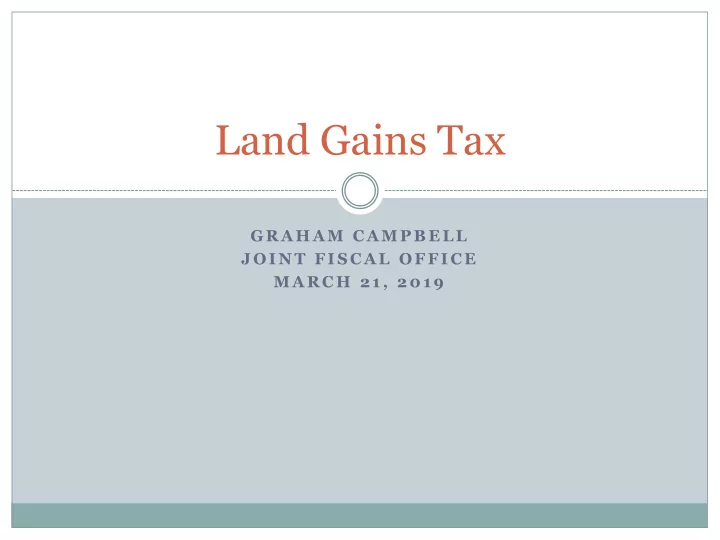

Land Gains Tax G R A H A M C A M P B E L L J O I N T F I S C A L O F F I C E M A R C H 2 1 , 2 0 1 9
What is the Land Gains Tax? A tax on the realized capital gain from the transfer of Vermont land held for six years or less Passed in 1973 by Governor Salmon Designed to limit land speculation and provide relief to property tax payers. Title 32, Chapter 236
How is it calculated? First, determine whether it applies! Major exemptions include: Buildings (the tax only applies to land gains) Property held for longer than six years Leases Principal residences (on up to 10 acres of land) Gift transfers Nonprofits Agricultural land, if it is held for more than 6 years
How is it calculated? How is the value of the land appreciation calculated? First, establish the basis For land appreciation, there are two methods: Get an appraisal (has to be certified by Tax Department) Determine the amount of the appreciation attributable to land Town listers generally break down value of property by land and improvements Tax Department has guidance, usually it’s about 25% of value
What are the rates?
How much money do we collect? • 4285 Returns Filed • 411 returns with tax due • 73% of money paid by top 9% of filers
Bigger picture In theory, land gains revenue would track the value of the grand list in the state. As grand list increases, potential revenue stream grows and vice versa
Land Gains vs Grand List
Recommend
More recommend